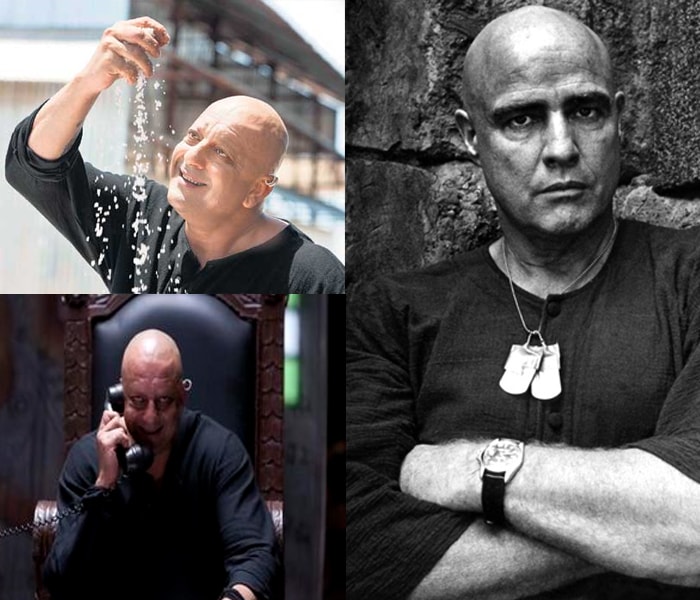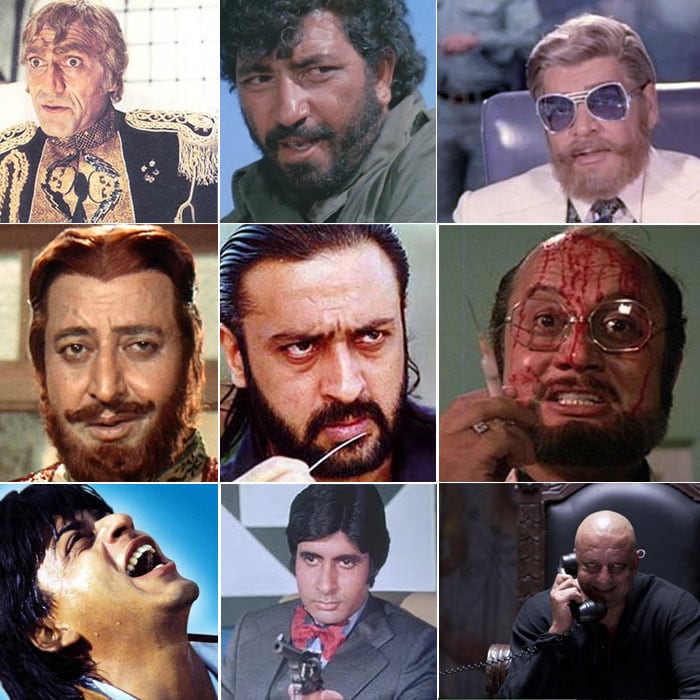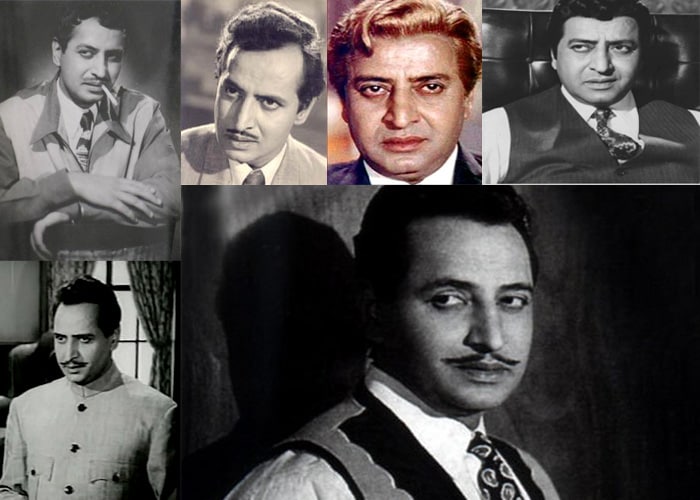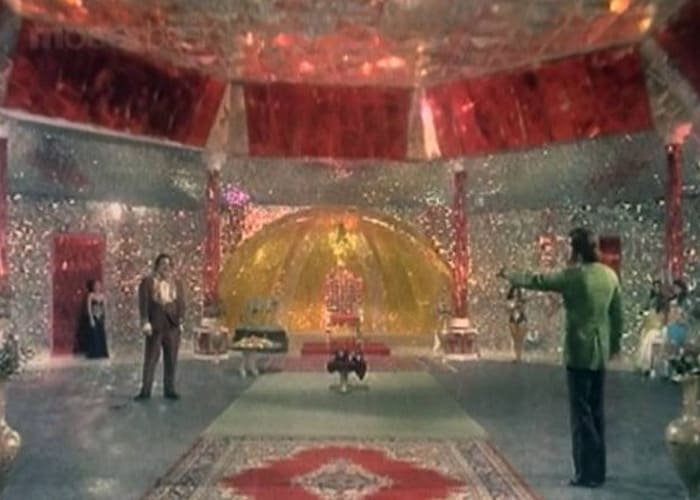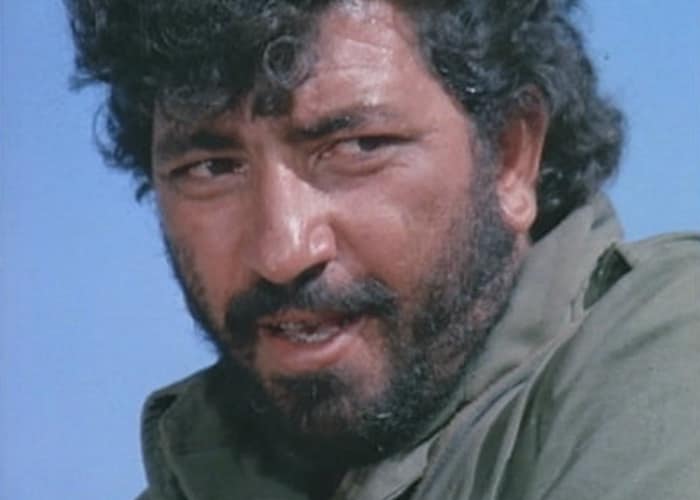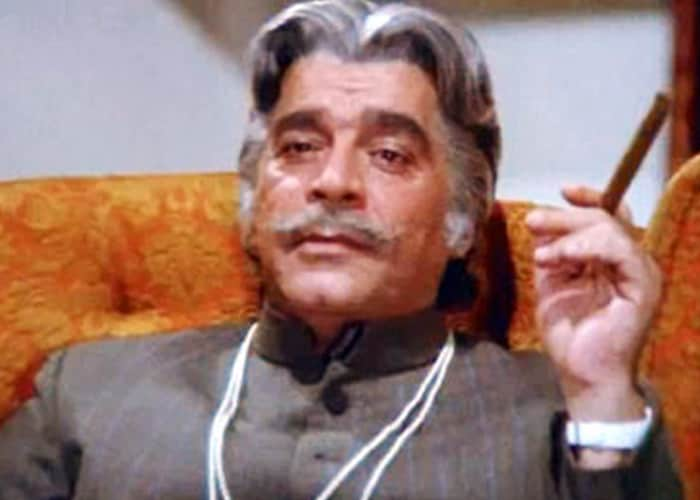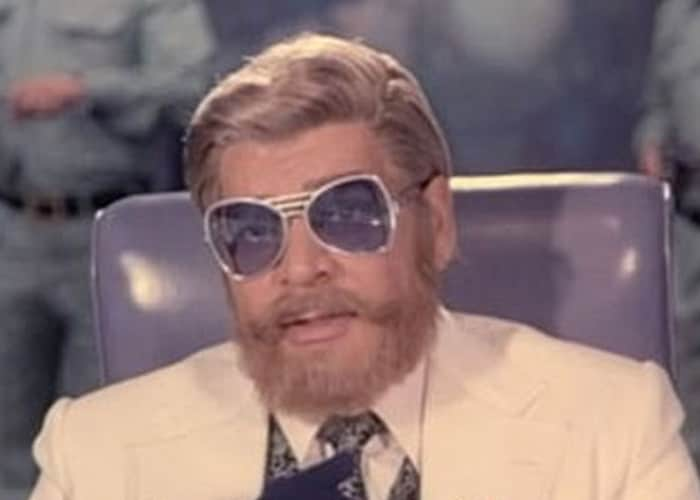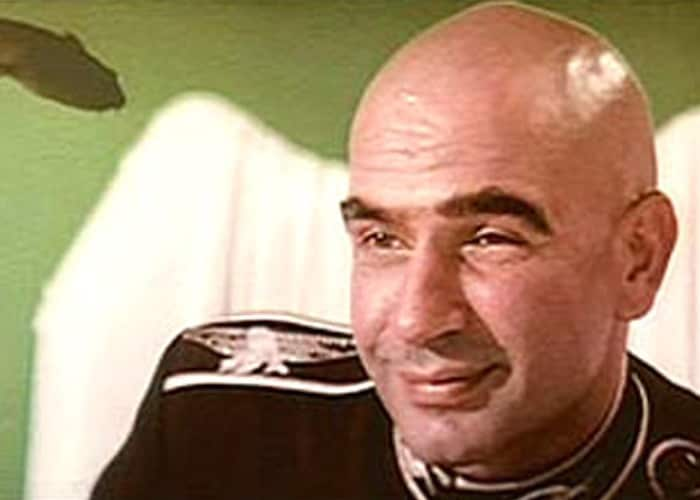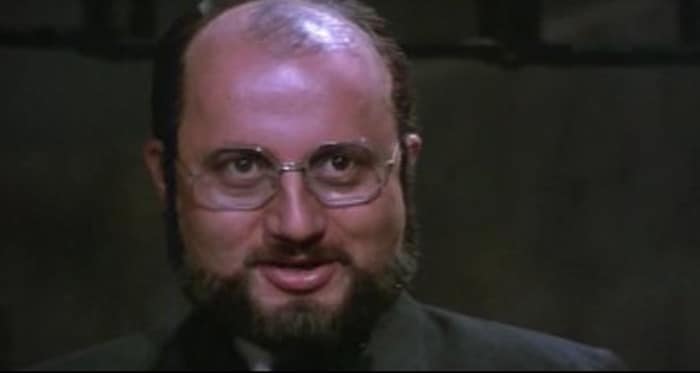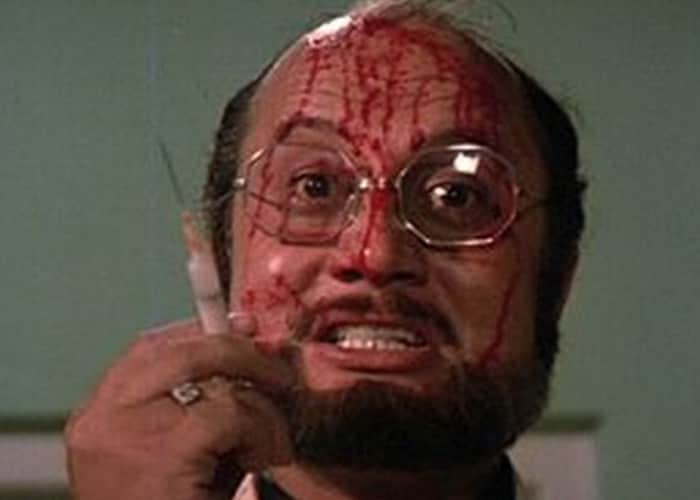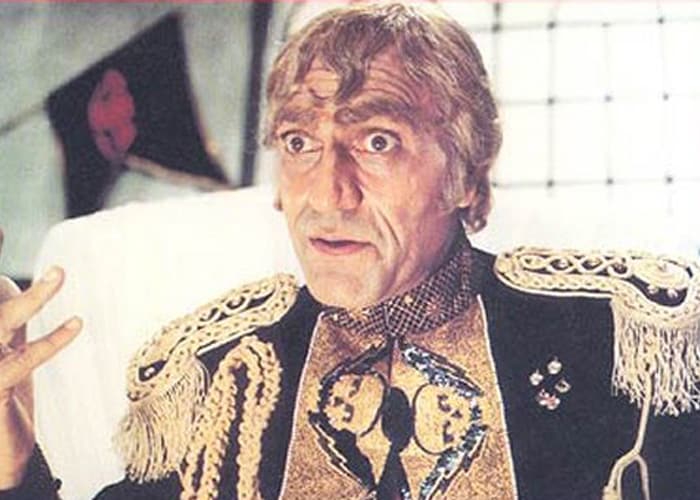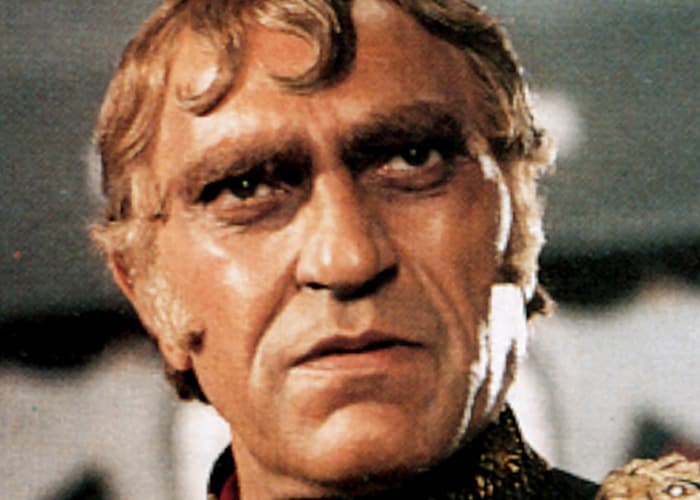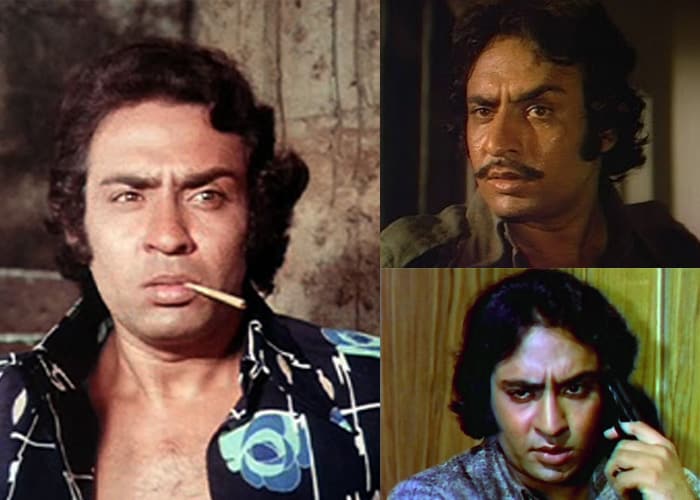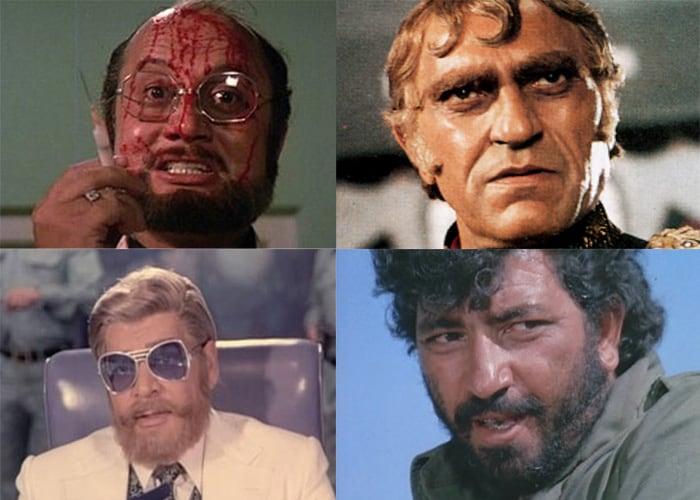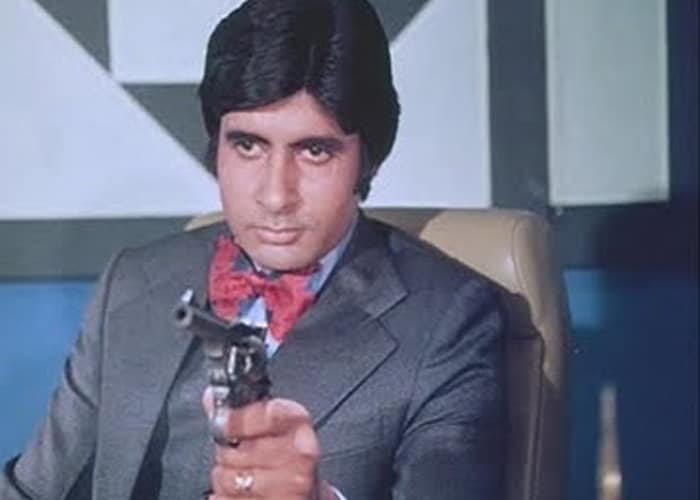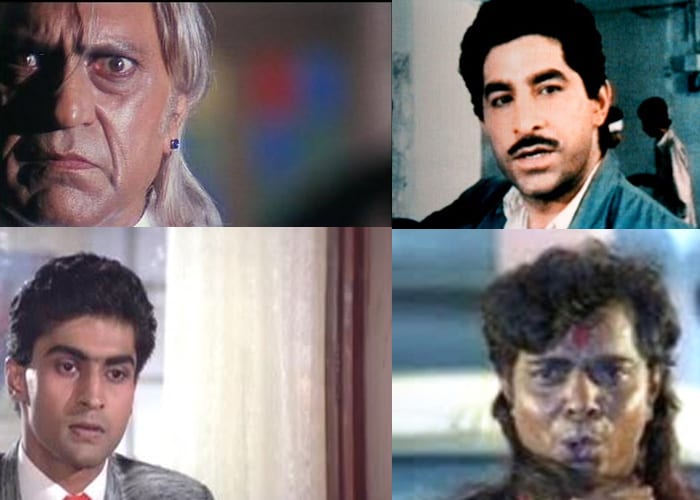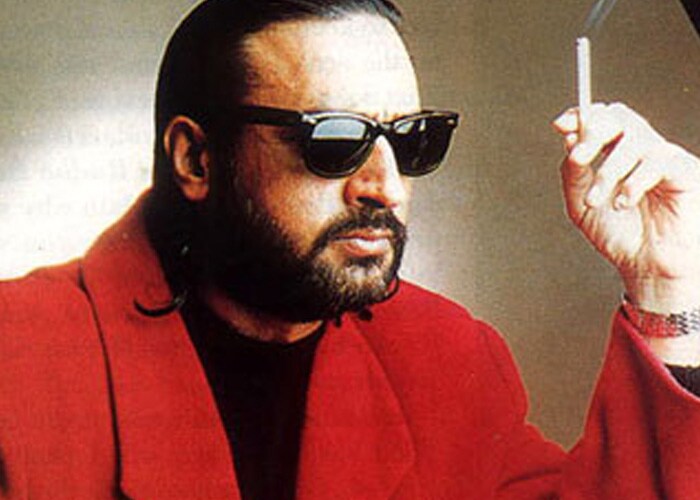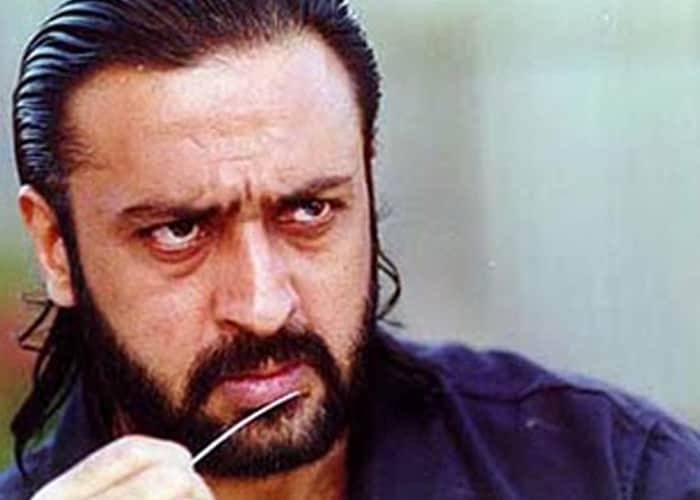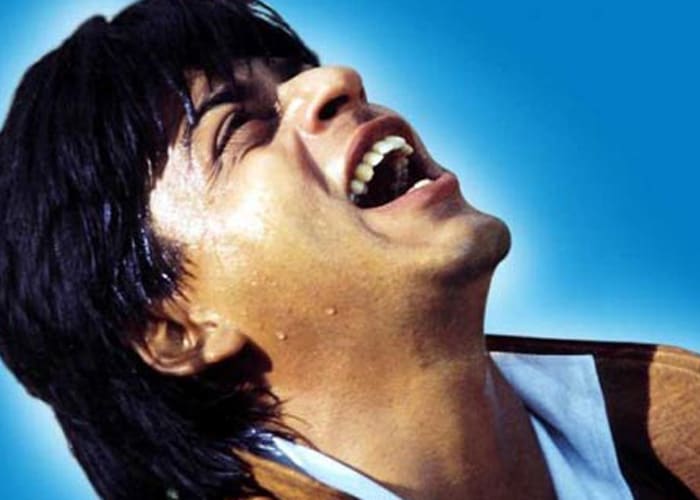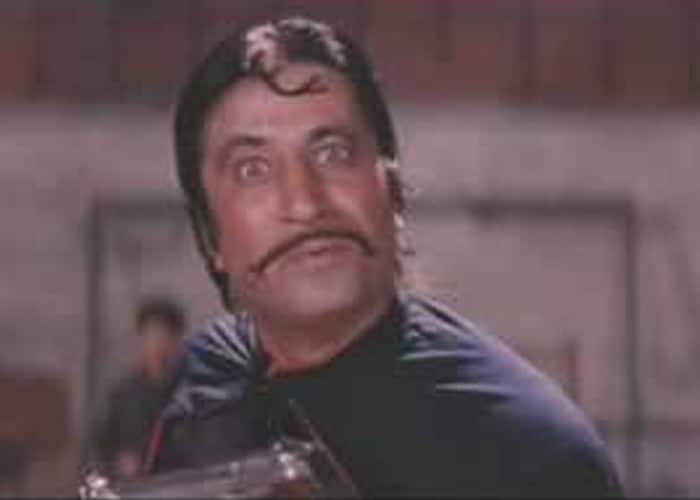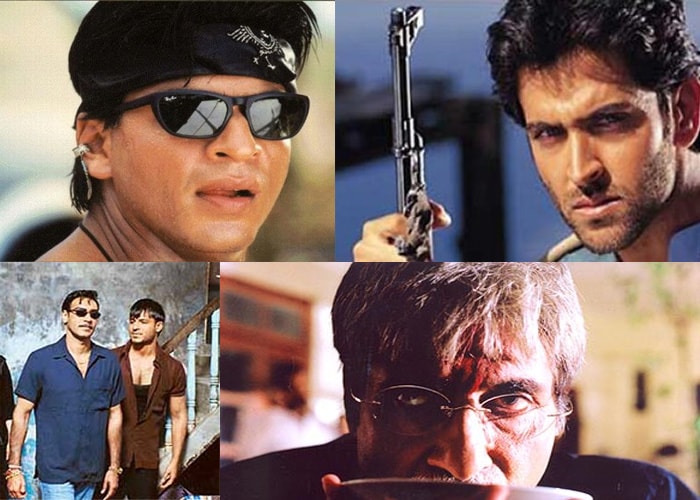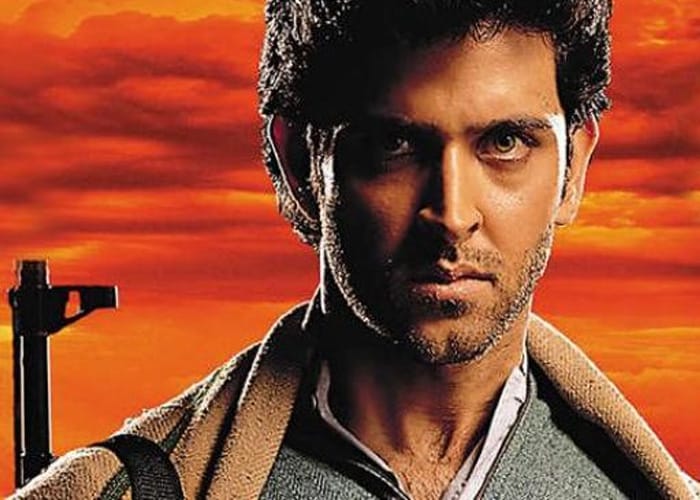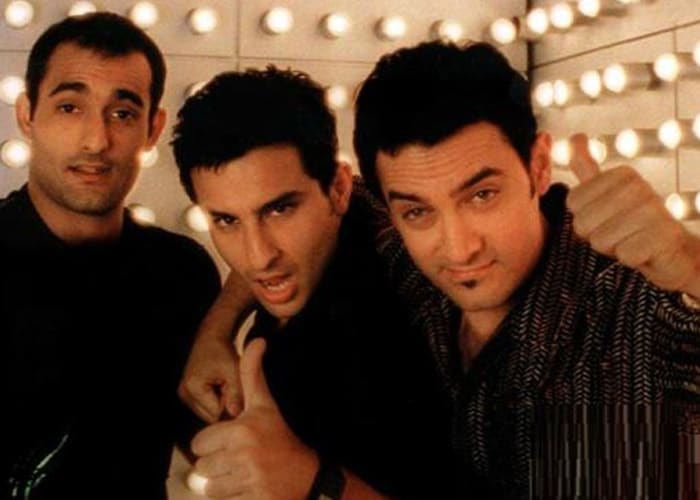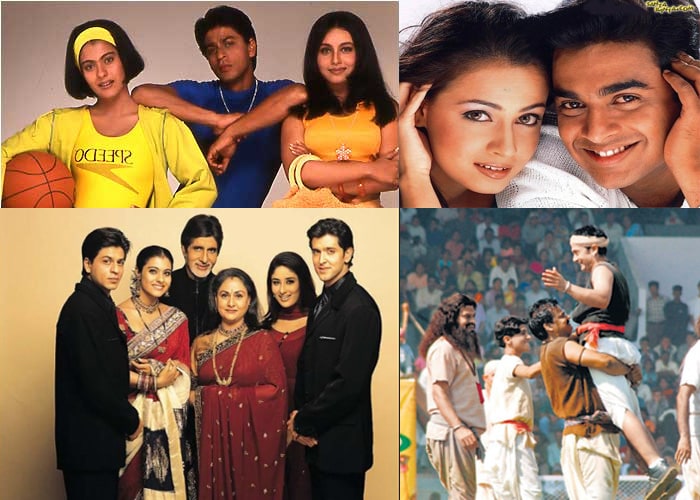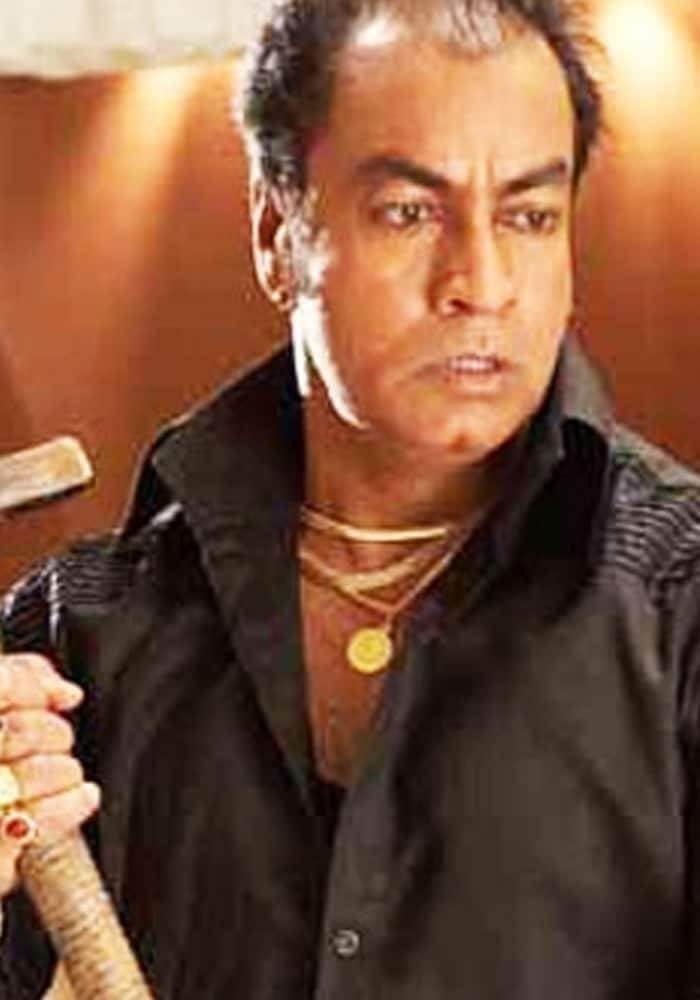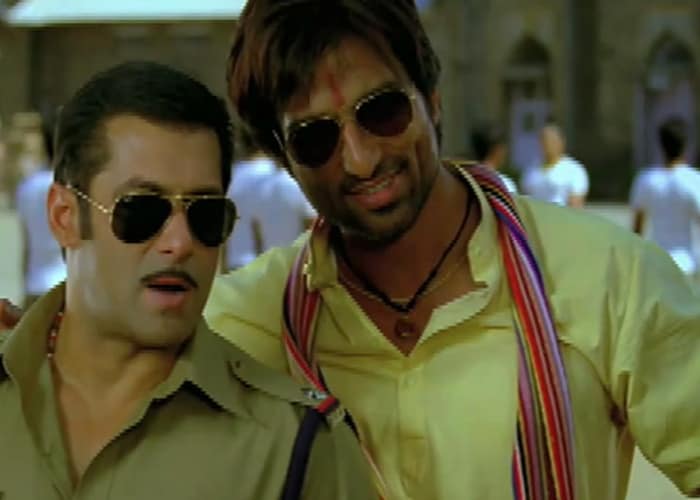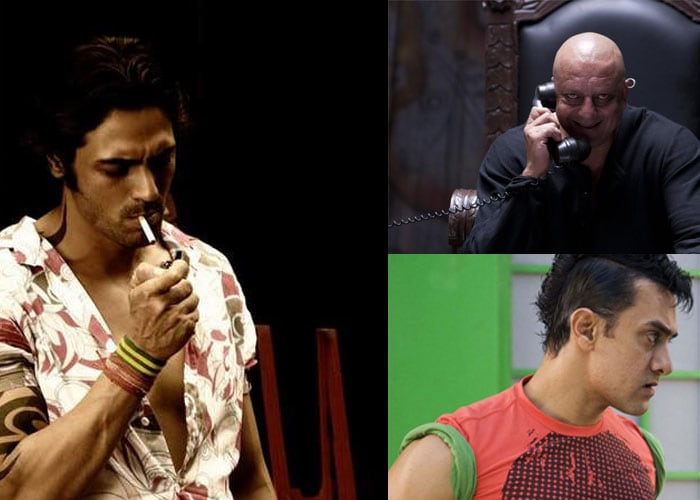Bollywood: The changing face of villains
Philosophers tell us that nothing is ever black or white, but Bollywood obviously never got the memo. Ever since the inception of Indian cinema, the villain has represented a dark side so evil, so loathsome, that it becomes necessary to take a look-see.
And now that the very face of the evil-doer is all set to change again, this intervention becomes timely, as well.
-
The much-talked-about violent look of Sanjay Dutt may not quite as original after all.
Reports say that Sanju baba's much-raved-about look in Agneepath has been inspired by Hollywood legend Marlon Brando's character in Apocalypse Now.
While Sanjay Dutt plays the role of Kancha Cheena in the remake of Agneepath, Brando essayed the role of Colonel Walter E. Kurtz, a fictional character in the 1979 film. The character of Colonel Kurtz is based on the character of a 19th century ivory trader of the same name from Joseph Conrad's novella Heart of Darkness.
Coming Up: The evolution of villains in Bollywood... -
The earliest films in Hindi cinema were mostly a fictionalized documentation of reality--hence the entertainment adage "reel life reflecting real life"; consequently, the villain has been a manifestation of the evils afflicting society at the time – moneylenders and land-grabbers (Thakurs) early on to the spies and “foreign agents” looking to betray the country of the 60s, to the stylized villains of the 70s to the single-biggest “villain” of modern times-–the corrupt politician.
The villain has always been a symbol of subjugation; the names might have changed but the faces have remained practically the same--rich, ruthless beings with absolutely no morals.
But 80 years is enough time for evolution to take place on a micro-scale. Which is why the name, the face and the inherent style a villain possesses has gone through the entire gamut of change.
Here's a look at the changing face of villains in Hindi cinema. -
The early 50's and 60's of cinema belonged almost wholly and solely to Pran.
His heavy lidded eyes, sideways smile and that sheer look of seeing and knowing more than you did struck fear in many hearts. In fact, a popular fable from that era goes that when little children would refuse to sleep, their mothers would tell them to hush or else they would call Pran to take them away.
Needless to say, the hapless children snuggled right in and made their way to dreamland. -
Another legend has it that parents stopped naming their children 'Pran' for fear they would grow up to be villainous little devils.
Pran went on to essay negative roles in many films in his career, some of which include Madhumati, Ram Aur Shyam, Dil Diya Dard Liya, Aadmi. For his outstanding performances, he was awarded the 'Villain of the Millenium' award. -
In the 1970's, everything in Indian cinema was exaggerated: the fight sequences had the hero jump inexplicable heights, somersaulting a few times for good measure, only to land neatly on a pile of henchmen. The henchmen themselves were no good, of course, succumbing to a meek punch from a red-eyed hero.
And then there was the villain, the Boss, the Don, the king of the ever-thriving underworld. He almost always had a den to himself, a plush chamber complete with revolving, automatic doors, man-eating sharks and various instruments of torture, ranging from bone-crushing walls to soul-crushing bear traps.
We take a look at these very characters. -
Thirty-six years ago, Indian cinema witnessed a phenomenon that would go down in the annals of history.
Making his debut with Ramesh Sippy's Sholay, Amjad Khan burst on to the scene as Gabbar Singh. He needs no further introduction, since even today his dialogues like “Kitne aadmi the” and “Tera kya hoga, Kaalia” reverberate through our minds. -
Gabbar was defined by his squeaky baritone, shifty, slit-like, almost sleazy, eyes and the crackling belt that he used to flog his enemies and friends alike; coupled with some of the best lines a man has ever had the privilege to mouth, Gabbar Singh becomes one of Bollywood's greatest villains of all time. This is an undisputed fact in most circles.
He was also different from the rest; he didn't have that underground lair Hindi villains seemed to love so much. He wasn't interested in gathering vast amounts of wealth, he didn't believe in male-oriented bling and he certainly wasn't going to faff around while his goons did all the work. -
The "loin's" den was most in evidence in films where the beloved Ajit was on the wrong side of the law.
Known to be polite to a fault and never more than merely condescending to his heroes, Ajit brought that stylish charm to his roles that makes him one of the most revered, and feared, villains of Hindi cinema. -
Perhaps his most famous role was as 'Loin', the antagonist in Subhash Ghai's debut flick, Kalicharan.
The character was of a flamboyant, supremely rich smuggler who hides behind the facade of society's biggest do-gooder.
The film was an immense hit and launched Ajit's career into the statosphere. -
While never actually having gone anywhere, Pran resurfaced in the 70's with his memorable role in Zanjeer, opposite Amitabh Bachchan, who played Inspector Vijay.
He played the role of a pathani mechanic Sher Khan, who played a Vijay's formidable foe. However, appraising Vijay's formidable courage, Sher Khan decides to change sides and work with Vijay instead of against him.
Pran won many accolades not only for his performance but also for his unique look--he sported a flowing red beard and equally flaming red hair, along with authentic Pathani clothes. He even sported an Afghani accent. -
Ajit's closest contender in the villainous category would probably be Shakaal, the dynamic, extremely evil smuggler in the Amitabh Bachchan-Shashi Kapoor-Shatrughan Sinha starer Shaan.
Shakaal spent his time in an underground den, terrorizing society and the hapless police in equal measure. Man-eating sharks completed the decor in inimitable fashion, adding that sense of build-up to the entire film. Nobody could have known that the sharks would play such an important role towards the end, which probably added to the scare factor the film became. -
Unlike most virile villains, who had a head full of hair, Shakaal was bald and constantly played with his pate, making the simple action extremely menacing in the process. Add to that a creepy, lopsided smile and eyes that bore into your soul, and Shakaal became one formidable foe.
Kulbhushan Kharbanda, whom many will remember as Aamir's father in Jo Jeeta Wohi Sikander, played Shakaal with such obvious exuberance, you could see that the fine line between acting and real life had somehow blended. -
A better part of a decade later saw the emergence of one of cinema's most hated villains, Dr. Michael Dang, from Subhash Ghai's Karma.
This was also Anupam Kher's breakout performance, making him an overnight sensation and a character actor of no mean contention. -
Dr. Dang was a criminal scientist who avenges a slap on his face from Dilip Kumar's Dada Thakur by wiping off his entire family. The memorable line “Thappar ki goonj” reverberates in the minds of cinephiles even today.
The mugshot you see in the photograph is one of the most famous photographs to have come out of Indian cinema. Anupam Kher's bloodied face, a menacing syringe in hand and a sinister smile to boot just screams out “murder”. -
The late 70's and 80's also saw the emergence of side-villains like Ranjeet, who could usually be seen plotting some mischief or the other.
In most films, Ranjeet's beat was to be the sleazy sidekick/son of some filthy rich smuggler. He was usually the one antagonizing the hero and the mouthpiece of the main boss. -
Character actor MacMohan's role was much the same, save for the sleaze. In fact, he was almost always the voice of reason that the main villains casually ignored. Had they had the presence of mind to listen to him, maybe our films would have ended a little differently.
MacMohan, who played Gabbar's aide-de-camp Samba in Sholay, will forever be remembered as the 'high henchmen' of Bollywood, for his refusal to ever be seen on the ground in Sholay; he could be found sitting languidly on one of the many giant boulders. -
So far, we've seen villains who had a penchant for extravagance, villains who had more than their fair share of quirks.
Whether it was the sarcastic, crude Gabbar Singh or the erudite-but-evil Loin, the villains had some sort of defining quality to them that you wouldn't really find in an everyday being.
Which is what separates our next villain from the rest..... -
Sneaking into the list is Amitabh Bachchan's perfect portrayal of Don, one of the world's greatest smugglers.
Don defined the term 'uber-cool', with his stylish clothes, the ever-burning cigar, the love for fine alcohol and finer women, and the sophisticated treatment he meted out to everybody. -
Don was every thinking man's dream come true--he was handsome, strong, gifted with entire vats of intelligence and had all the luxuries one could possibly imagine.....and then some.
He appealed to many because of his smug dialogue which spoke of such inherent confidence you'd be hard pressed to even look him in the eye.
Remember the line "Don ke peeche toh gyarah mulkon ki police padi hai lekin Don ko pakadna mushqil hi nahin, namumkin hai"? Of course you do.
Coming up: The evil face of the 90's. -
The 70's and 80's were predominantly about villains in their 50's or even 60's. Perhaps due to their age (or because of budget constraints), they rarely ventured out of their lairs.
The 90's took the show on the road, bringing down the average age of these despicable people in the process, with the sole exception of Amrish Puri, who continued to ravage and savage our heroes. -
The new decade saw the emergence of actors like Gulshan Grover who, like Pran, never really saw a dip in their careers forthwith. Sure, they might not have worked in award winning films, but at least they had steady work.
Gulshan Grover carved a niche for himself playing the quintessential 'bad man' of Bollywood. In fact, in Ram Lakhan, he even played a character called Bad Man, if you needed any proof. -
But this decade will be remembered predominantly for Kancha Cheena, the evil don from Agneepath.
Played to perfection by a strong, silent Danny Denzongpa, the role won him many accolades. Kancha Cheena was seen as the first true successor to Gabbar Singh, who singlehandedly stole the show in a hero-dominated film. -
Bollywood became engagingly younger with the entry of now-superstar Shah Rukh Khan.
Clocking in a brilliant initial run with films like Baazigar, Anjaam and Darr, the King Khan's portrayal of manically obsessed lovers or sons had the audience firmly in his grip.
With these performance, Shah Rukh also brought back a certain passion to cinema's villains, something that had been missing from most of the deadpan-but-deadly evil-doers. -
Somewhere in the middle, going quite unnoticed at the same, evil took on a funny face with Crime Master Gogo of Andaz Apna Apna.
Here was a villain so piteously, wannabe-evil, you couldn't help but laugh at him. Sadly enough, this breed of villain never really set a trend. -
Shah Rukh Khan had started ruling the mid- to late-90's. Having shaken off his bad-guy tag, he became Bollywood's leading romantic hero, taking over the mantle from yesteryear superstars like Amitabh Bachchan and Rajesh Khanna.
However, he returned to his evil ways in Mansoor Khan's Josh, where he played a Goan ganglord.
However, the film eventually played him out as a nice guy, making him a mere victim of circumstances, a man the audience was quite willing to forget. -
With Mission Kashmir, Hrithik Roshan left behind his pretty boy image to finally come into his own as a very serious actor.
Brought up by a guilty police officer (played by Jackie Shroff), Hrithik's character eventually grew up to become a dreaded terrorist. His hurt and anguish at realizing that his adopted father was the one responsible for making him an orphan to begin with, fuelled his berserker rage against life.
Which was probably why, once again, the audience felt compelled to side with him, rather than antagonize such a clearly wounded soul. -
In 2001, Sunny Deol burst onto the scene with Gadar: Ek Prem Katha, which was essentially a very morbid, albeit engaging, love story.
Here, there was no single villain, circumstance, life and communal strife taking up that role. The film was set against the backdrop of the partition of India, in 1947.
Of course, Amrish Puri featured as a biased Pakistani man who refuses to let his Muslim daughter (Amisha Patel) marry her Hindu lover (Sunny Deol), but that track hardly compared to the poignant display of affection during the riot sequences. -
Dil Chahata Hai ended beautifully. The story of three friends, this was director-actor Farhan Akhtar's debut film.
Confused seeing the three smiling faces? Well, that's because this film continued the trend of not featuring a foe with a face. In this well-crafted tale of betrayal, friendship and love, 'life' took it upon itself to create the major controversy.
The film dealt mostly with conflicting views and hurt egos, both concepts which were well displayed by its stellar cast of Aamir Khan, Akshaye Khanna and Saif Ali Khan. -
This trend, of nameless villains, continued till pretty much the end of the decade, with family dramas, featuring overbearing fathers, fathers-in-law, mothers, sisters, brothers, friends, taking over from the usual villains.
In fact, it wasn't until recently the popular definition of the villain has seen a resurgance. -
Finally, in 2008, Aamir Khan's blockbuster film, Ghajini played its role in reprising the fight between good and evil.
Probably the only film to be named after the villain itself, Ghajini featured a ruthless character who murders Aamir's girlfriend in the film, played by Asin.
But he isn't done even then--he continues to chase and beat Aamir to a pulp, establishing himself as one of the most vile characters to ever show up on screen. -
2010 was Salman Khan's year through and through. With a blockbuster in Wanted already behind him, his next film Dabangg paved the way for his refurbished superstar status.
Dabangg was special for another reason, though. Not only did it bring back the villainous face reminiscent of the early 70's and 80's, it also featured one completely dark and one very grey character.
Sonu Sood's Chhedi Singh character might have upstaged Salman Khan's anti-hero, Chulbul Pandey, but Pandeyji himself was no less of a villain. Unscrupulous, corrupt and with absolutely no regard for society, he redeemed himself only very slightly by polishing off Chhedi Singh. -
We can also look forward to a string of baddie-two-shoes in the coming months.
Aamir Khan will reportedly play a gymnast in Dhoom 3, opposite Abhishek Bachchan and Uday Chopra.
Model-turned-actor Arjun Rampal will play the eponymous Ra.One.
Sanjay Dutt will essay the evil-looking Kancha Cheena in the new Agneepath.
This veritable slew of such roles can only mean we are on the brink of another revolution--one in which the villain takes his throne again.
Does this mean that a recall to the bygone era of dark characters is on the cards? Only time will tell. All we can do is wait and watch.
